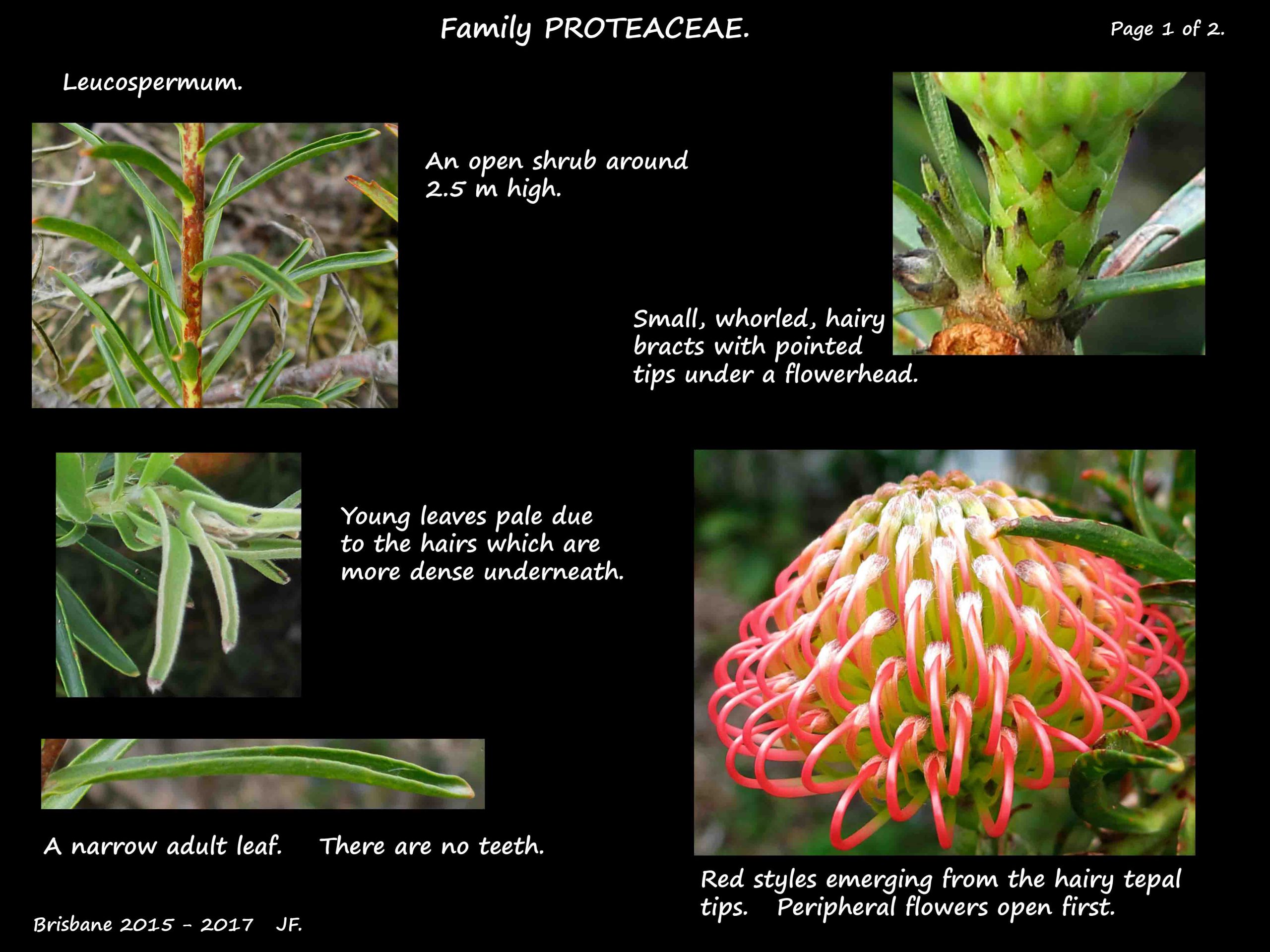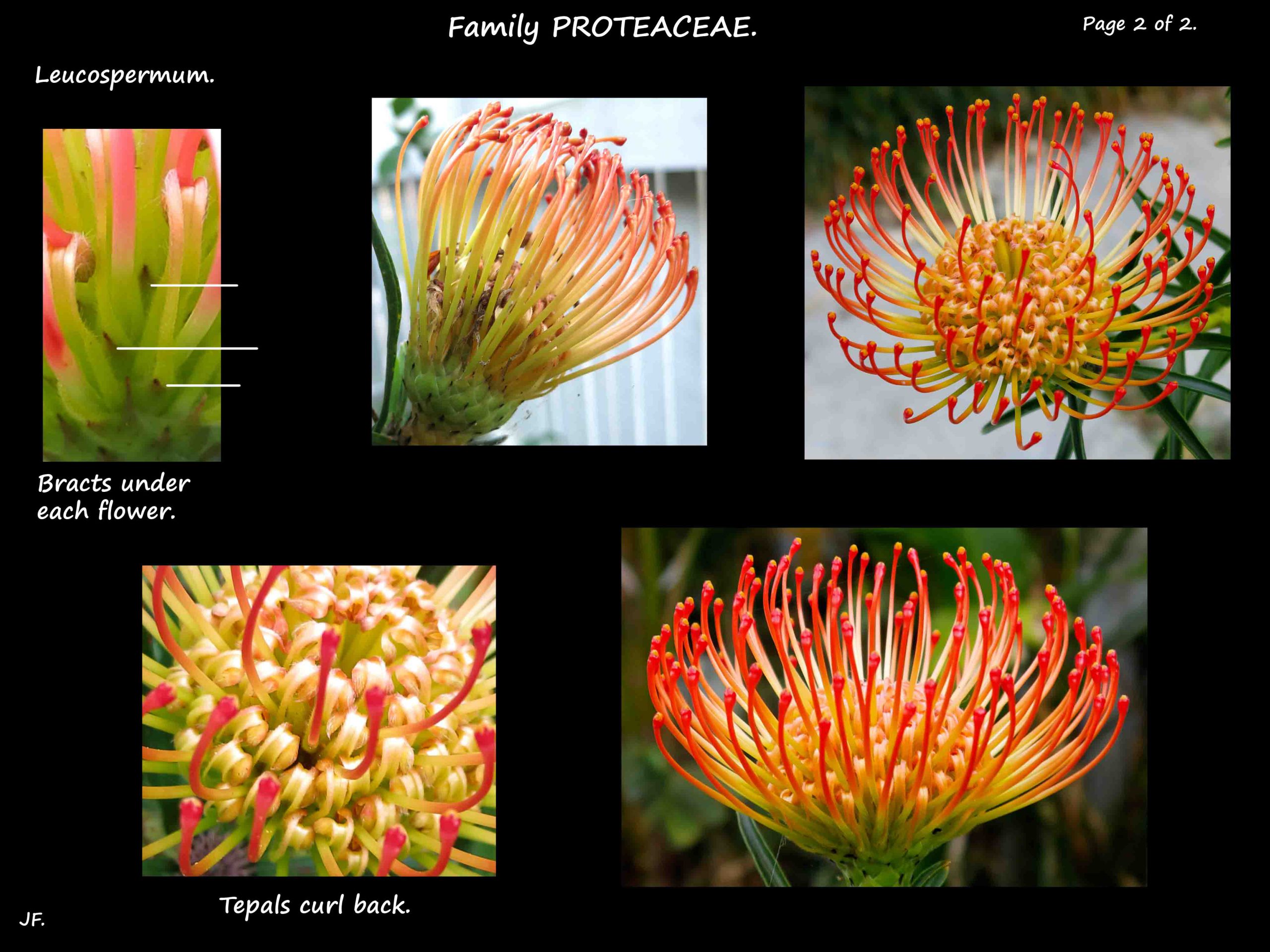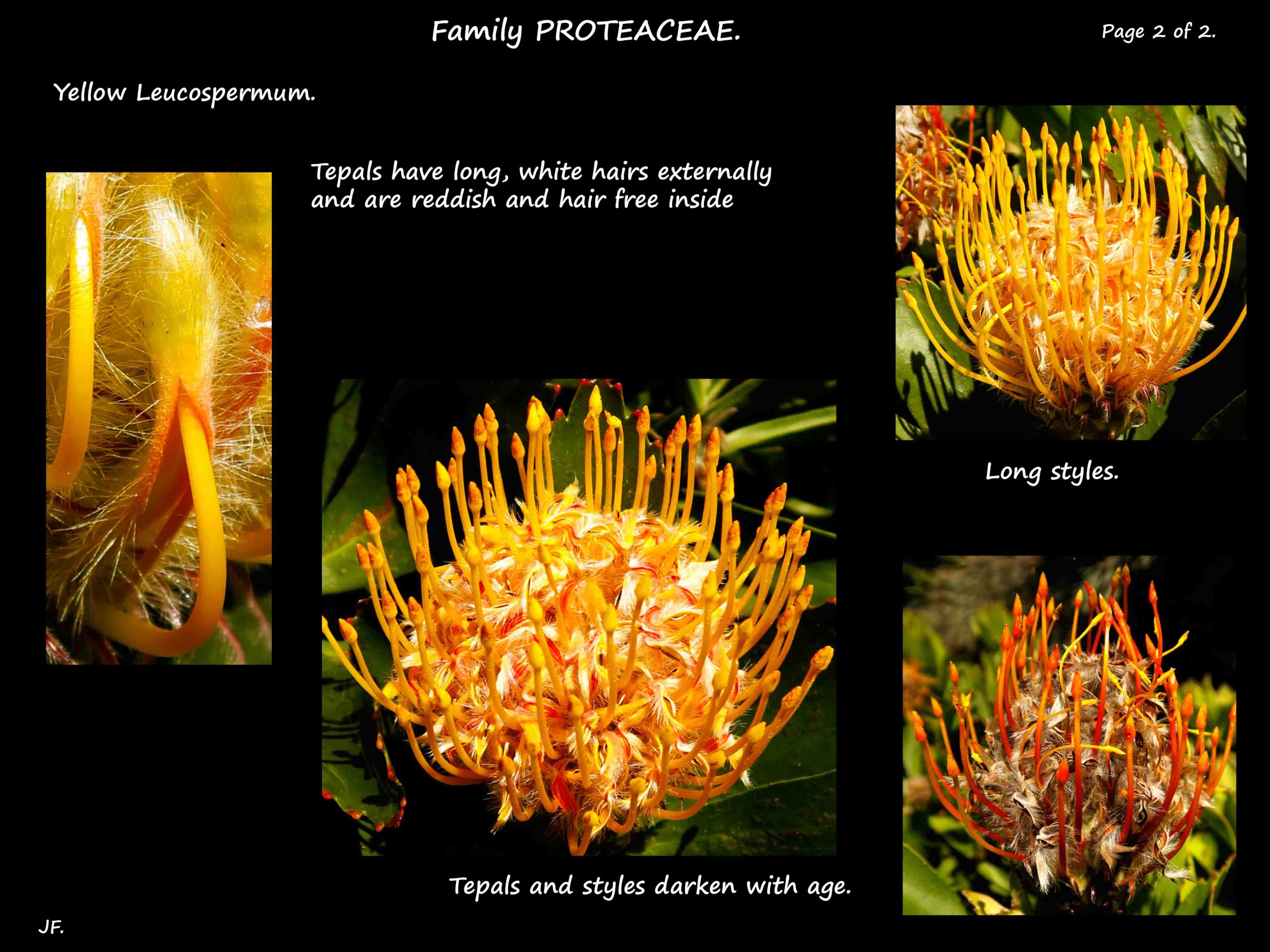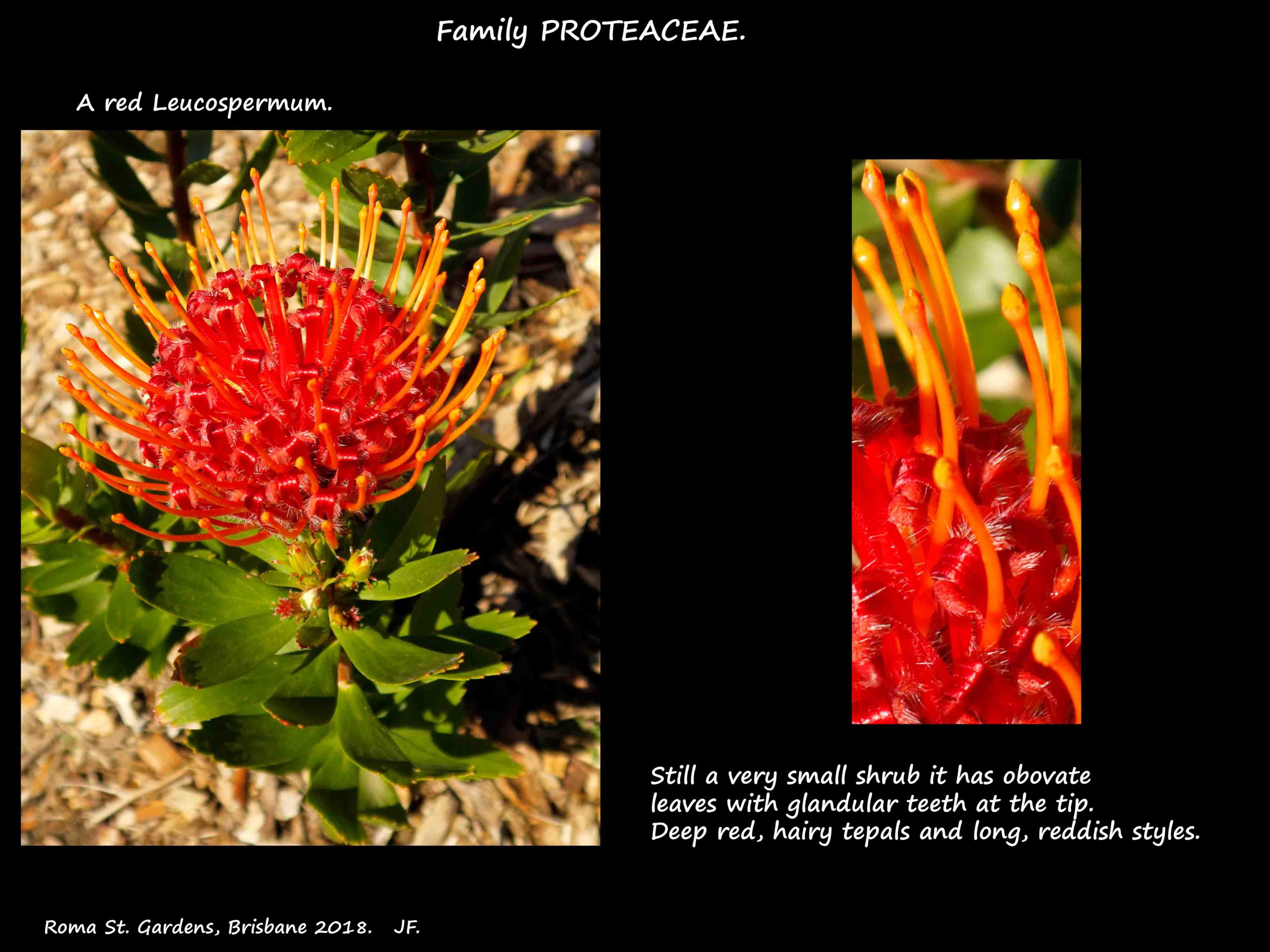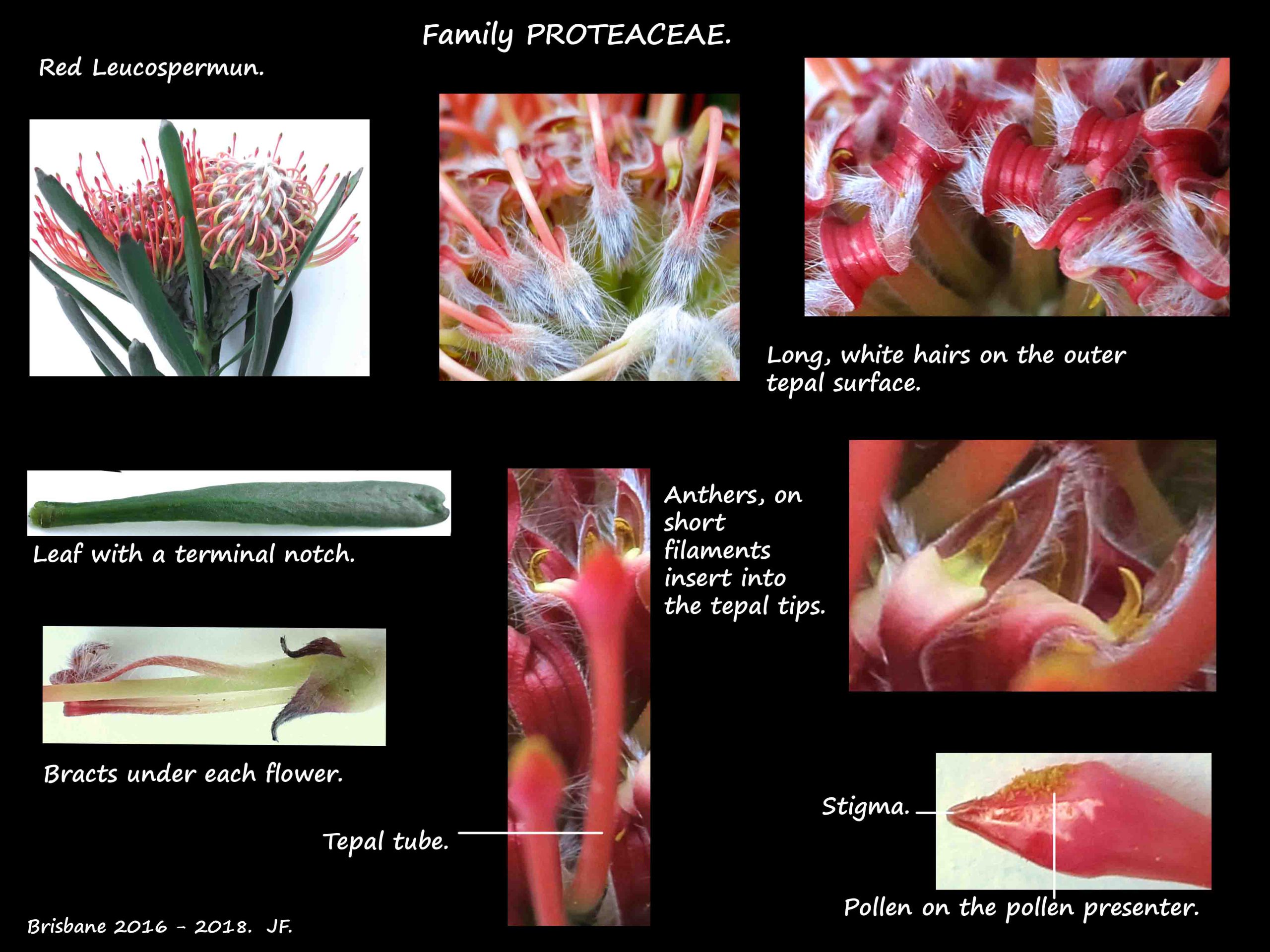Leucospermum.
Family Proteaceae > Subfamily Proteoideae > Tribe Leucadendreae > Subtribe Leucadendrinae.
There are around 50 species divided into 9 sections depending on their morphological features.
Shrubs or small trees 1 – 5 metre high often with a single stem or a low creeping plant.
The spirally arranged leaves may overlap or be spread out.
The green, red or greyish leaves usually have no petiole.
They are from 2 to 14 cm long, mostly obovate but occasionally linear, elliptic or wedge-shaped.
The edges can be smooth but usually have from 3 to 17 blunt glandular teeth near the tips.
They can be smooth or have short or long, sometimes dense, hairs.
Axillary flowerheads, near the ends of the stems, contain many small bisexual flowers.
Each branch can have 1 up to 10 flowerheads depending on the species.
They can be as small as 1 cm or up to 15 cm across and have from 4 to many flowers.
The receptacle holding the flowers can be flat, globular, conical or cylindrical
and this determines the shape of the flowerhead.
Almost all have a whorl or involucre of bracts at the base of each flowerhead.
The fairly small, green bracts can be linear or ovate with a pointed tip.
Most are covered in dense soft hairs.
Individual flowers have a small hairy bracteole that sometimes becomes woody.
The 4 tepals are initially fused into a straight or curved tube up to 5 cm long.
It can be smooth externally or have hairs, especially near the often expanded tip.
When the flower opens the tepals may all separate or 3 may remain fused.
They commonly curl backwards but occasionally remain straight.
Tepals can be yellow, orange, red, pink, cream, white or greenish.
In some the colours darken as the flower ages.
In most species the anthers insert directly into the tepal tips but a few have a 1 or 2 mm filament.
The superior ovary, 1 – 2 mm long has a single locule with 1 ovule.
The 4 scale-like nectaries, 1 to 3 mm high, at the base of the ovary produce a lot of nectar.
Flowers have long styles, from 1 to 8 cm long, that extend well past the tepals.
This is the source of the common name of pinheads or pincushions.
The style can be straight or curved and is usually the same colour as the tepals.
The pollen presenter is variously shaped depending on the species.
The growing style bends then splits the tepal tube on the side near the edge of the flowerhead.
For a time the tip of the pollen presenter remains against the anthers in the still fused tepal tips.
The indehiscent, round or oval fruit contain a single seed up to 8 mm across.
They are seen as garden plants or cut flowers.
The species hybridise easily and there are numerous hybrid cultivars.
J.F.
